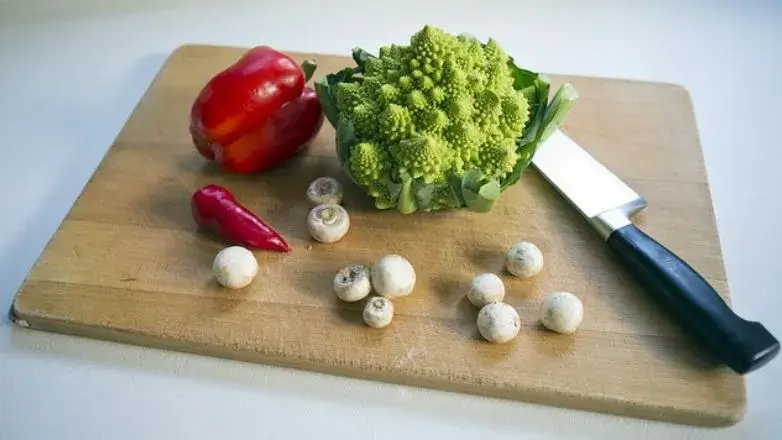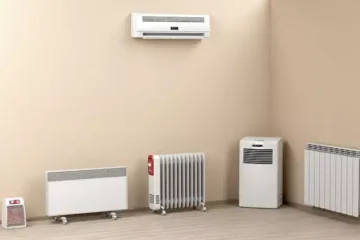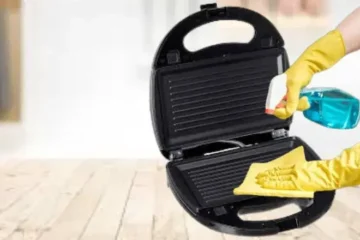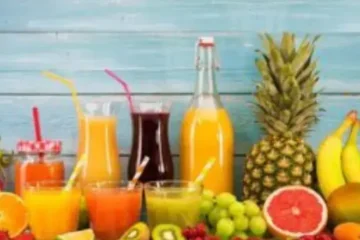Furnishing your kitchen with all the kitchenware you need is an effective method of making it functional. There are diverse and complete lines of useful kitchen items that you need but don’t miss having the Best Chopping Boards. Original designs of chopping boards are widely available in the market and each design is individually crafted from peculiar and enduring material. Each kind of material features not just decorative facets but well-polished finishes. Whatever food you are preparing, you must be equipped with the most functional Types of Chopping Boards.
Table of Contents
- 1 What Is A Chopping Board?
- 2 Are You Looking For A New Chopping Board?
- 3 Choosing And Cleaning Your Chopping Board
- 4 How to Pick Your Cutting Board
- 5 Cleaning Your Chopping Board
- 6 How To Choose The Right Chopping Board
- 7 What To Look For When Purchasing a Chopping Board?
- 8 Choosing a Chopping Board – What options?
- 9 Conclusion
What Is A Chopping Board?
A chopping board is also known as a cutting board. It is a durable block of different materials that you can use to cut up things on. These types of chopping boards are made from several different materials like wood, steel, glass, plastic, marble, and even Corian. Normally they are used to cut up meat when you are preparing it for eating. But there are other reasons people use a chopping board.
The reason there are so many different materials is that some of them are simpler to clean. While some of the other types of material will sustain a lot less damage as you cut on it. Whichever type of chopping block you have though you need to make sure that you clean it and perform other maintenance on it so it will last longer.
Since bacteria can thrive so easily on a chopping board, see they love those grooves in the material that happen when you cut. You should try and always use one chopping board for your raw meat, and a different one that you cut vegetables or anything else on.
So when you try to decide on what type of chopping board you want, how do you pick the right one? The different materials all have pros and cons that make them better or worse for certain situations. Here are some of the reasons why you may or may not pick certain ones.
With a wood chopping board, you have a bit of an advantage to the wood over plastic. Not only will the wood heal up a shallow cut by itself, but the wood also may have anti-septic properties to it. A woodblock should be made of hardwood. The grain should also be tight because that will help to cut down the scoring that will be caused when you cut items on it.
An example of what you should use is maple wood, red oak is very hard wood, but since there are larger pores on it, it’s not a good choice.
Some other tropical hardwoods will have allergens or toxins in them, so you need to be very careful when you pick them out. Bamboo is a very good choice for a chopping board, though it’s grass, not wood. In most cases, plastic is a lot more sanitary than your wood choices out there. However, after many tests that have been run it may not be the case on the chopping board.
Those little scores that are left on a plastic block after cutting can hold bacteria, and they may stay there after washing. But you can use a bit more chemicals to clean these blocks than the wood-alternative. Normally a plastic board will be termed a PE, which is short of polyethylene or the material that these are normally made of.
Another choice you have is glass, which is a bit simpler to clean. Not only that but as you can place them in the dishwasher, and you will not get cuts in the block either. But you may have a problem with chips to your knife edges. Plus the fact of having something glass that may fall to the floor and break apart. Well, you can see the main disadvantage to it right there.
Steel is easy to clean like glass, throw it into the dishwasher and you have a clean device again. But it may damage knives because of their hardness. So really it will depend on whether you want to replace knives or get them sharpened often.
Finally, there is the material of marble. This shouldn’t be used for cutting. You can use it for a serving board or even rolling out dough. If you cut some foods on this you may find that it will dissolve after an amount of time. Plus the properties of the board are much like that of glass and steel.
Many choices you will have for a chopping board, consider them carefully and get your choice.
Are You Looking For A New Chopping Board?
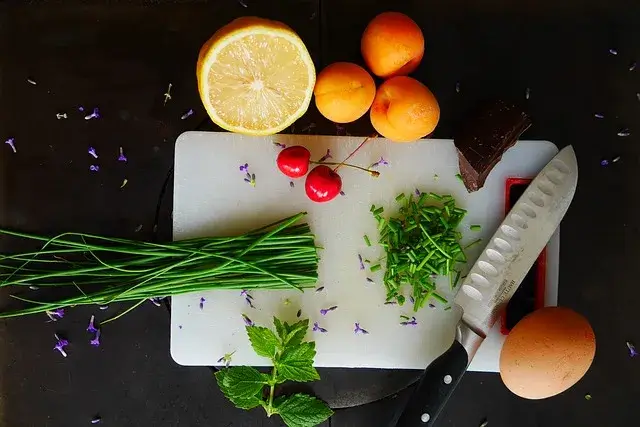
Who doesn’t love going shopping for kitchen gadgets? Today it seems like there are so many new and interesting things that will make our lives simpler in the kitchen, it is fun just to go window shop to find out what is available. When you are looking for something more practical for the kitchen, you now have a lot more variety to choose from, as well. Even if it’s something simple like a chopping board, you now have a lot of choices.
Earlier, things were pretty much black and white. Our mothers taught us that we were the ones who should and would be in the kitchen, that men never entered the kitchen except to eat. Having that in mind, it’s funny how many different kitchen products have been geared towards men these days, even types of chopping boards.
Usually, someone uses a chopping board in the kitchen, however, others have been known to use them in other uses. Generally, though, you’ll find chopping or best cutting boards in the kitchen area. When you go to purchase a new chopping board, whether you go to a kitchen specialty store or shop online, you’ll find a huge variety of sizes, shapes, and materials that the boards are made from. You can select different boards for different uses or simply have one to use for everything. Centuries back, women started using types of chopping boards, for cooking.
They found it easier to get the knife to chop through the bone and flesh easier when there was a solid surface under what they were chopping. They would simply take a slab of wood outside the house or at home for use as a chopping board.
Of course, once they were used for kitchen purposes, it wasn’t typical for anyone to want to use the chopping board for any other use. Since cutting boards started as solid wood, it only made sense that they continued along the same path for quite some time.
The heavy wood makes an ideal surface for cutting and chopping, whether you’re trying to cut through chicken bones or slice thin onions. The problem with wood was, it was difficult to clean the chopping blocks.
The fluids from whatever you are cutting seep into the wood from the things you are chopping. These fluids can get trapped deep in the wood of the board and cause bacteria to spread. You must be very careful when trying to clean your chopping board.
Most women will soak their board in bleach to make sure that all of the bacteria are killed. One big downfall about using these wooden chopping boards is that you cannot soak the board or submerge it in water because it will warp the board.
Plastic chopping boards are regularly used today for a variety of reasons in the kitchen. Chopping vegetables on a plastic surface seems to be better than using a wooden board.
The chef uses the chopping board to firmly and quickly chop fresh vegetables with a very sharp knife without injuring the kitchen countertops. Plastic chopping boards can be quickly and easily cleaned and can even be put into your dishwasher when you’re in a hurry. Cutting boards can be incredibly large, some are about two feet long and one foot wide and some are as small as a drink coaster.
Some types of chopping boards have an indentation in them around the circumference of the board. This is to catch any juice or liquid from what you’re cutting. You can use the liquid in the recipe that you’re making or quickly dispose of it by simply tilting the board over the kitchen sink.
One thing that has become very popular for cutting is the thin cutting sheet. This is a form of a chopping board that is nearly as thin as a sheet of laminate paper but can be used to protect your counters as well as the things that you need to cut. The sheets come in many colors from white to hot pink. You can buy the brightly colored sheets when you want to spice things up in the kitchen or match the theme of a party or decor that you have.
There are types of chopping boards that are used specifically for cheeses. These can typically be used for serving your friends and family cheese and fruit or cheese and crackers when you have them over for a party or dinner or snacks. Some cutting boards have an inlaid ceramic surface. These are ideal for cheeses. They can be wiped down quickly and easily and most of the time, the inlaid surface can be removed and put into the dishwasher or washed in the sink by hand.
Some types of chopping boards are the size and shape that they can fit over the top of your kitchen sink. They will usually have a hole cut out around the top of the board so that as you are chopping your favorite vegetables, you can get rid of the pieces that you won’t be using in your cooking by simply sweeping the bits and pieces into the hole and down the kitchen sink. The hole also doubles as a handle, making it easier to dig out of the kitchen cabinets.
You can find pretty much any pattern or color of a chopping board that you may dream of. The boards, though they may be made of wood, polyurethane, or another sturdy material, will serve nearly any purpose you have in the kitchen.
Whether you use the chopping board merely for cutting through meat and bones, vegetables or you use it to serve your guests, they are attractive and functional. Make sure that you know what you’ll be using your board for before you buy it. That way you can decide what size and what material you need. Make sure that your cutting board is made of a material that you can easily clean.
Choosing And Cleaning Your Chopping Board
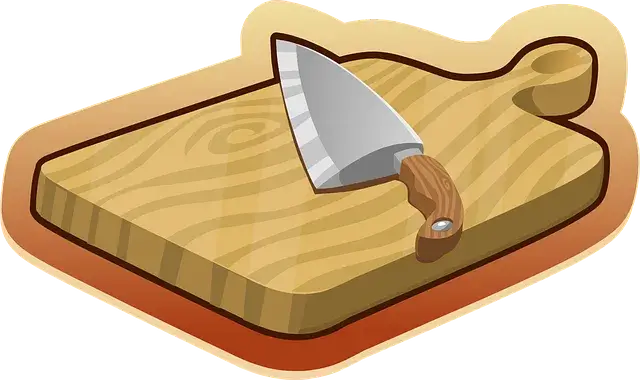
Without a Chopping Board, a kitchen can never be called a kitchen. After all, where else can you possibly prepare your ingredients, such as spices, meat, and vegetables? Today, you can find all sorts of cutting boards varying in size, shape, material, and use. It’s up to you to decide which of them would be an ideal addition to your kitchen.
Materials
There are four different materials used in making this types of chopping boards. Topping the list is wood.
Wood
Wood has always been a building material, so it’s no longer a wonder that you can find chopping boards made out of it. This type of board will also look good in any country-home setting and always has a charming appeal.
More than that, though, wood usually contains anti-septic properties, which means it can “disinfect” your chopping board immediately. Moreover, if you can pick one properly, such as one that is made from maple, you will discover that the chopping board doesn’t leave any cutting traces.
It also doesn’t hold on to dirt and liquid, which will not only destroy your board immediately but also contaminate the food you prepare. One problem with a wooden chopping board is that it is difficult to clean, and it becomes a breeding ground for bacteria if there are lots of cracks and cuts in it.
Apart from hardwood, you get a chopping board from bamboo, which is mainly preferred as it does not allow bacteria to reproduce is very durable, and is also resilient. It is also perfect for any Zen kitchen.
Glass
Another material used is glass. Tempered glasses can come in a variety of shapes and colors, so it’s very easy for you to play around with the design of your kitchen with them. Of course, they look elegant. They are also very easy to clean and are safe to wash using your dishwashing machine.
However, there are a lot of issues associated with glass cutting boards. For one, though they are highly durable, they can also cause damage to the edges of your knives. This is because they are a lot stronger than steel. They can also be too slippery that you may end up injuring yourself.
Moreover, they are very heavy to carry and are much expensive than wooden chopping boards.
Plastic
If you’re looking for a much cheaper chopping board, then you should go for plastic. It’s very handy too, something that you can bring when you want to camp or travel somewhere else. Though it’s known to breed bacteria because knives can create grooves, edges, or cuts right into plastic chopping boards, you can immediately get rid of them through proper cleaning.
Unlike glass and wood, this one is very easy to clean with the use of bleach and other strong cleaning materials.
Marble
A more complex material for your chopping board would be marble. Though it is a perfect partner for a granite or slate countertop, you may want to consider this the least. It can easily react to acidic foods, such as vinegar and tomato, which will eventually dissolve the marble chopping boards.
The chemical properties of marble may then move on to the food that you’re preparing. This also doesn’t react well with knives because it’s abrasive. You can reserve this for preparing cheeses or for creating dough instead.
How to Pick Your Cutting Board
If you’re having a hard time choosing your chopping board, you can use the following guidelines: The bigger the better. A lot of homeowners would prefer smaller chopping boards since they fit their dishwashing machine, easier to handle, and more convenient to clean and put away. However, it’s basic for you to have at least one large chopping board.
You need a large working space to be able to save time and become more efficient. Besides, it’s also hard to maintain a lot of small types of chopping boards. Moreover, since most of the large cutting boards are thick, they don’t easily get damaged by the constant use of knives and other sharp objects
There’s just one thing you need to remember when choosing your large chopping board. It should never go beyond the size of your sink. This way, it would be easy for you to clean it after use.
Decide on the purpose of the cutting board, they are generally used for cutting, but some have specific purposes. Like, the ones having grooves are more ideal for cutting raw meat as their juices can be trapped in between these grooves.
There are also cutting boards that have slats in them, which are more superb for preparing bread. Crumbs, which can then be found in the slats, can immediately be removed without really causing a lot of mess on your counter.
Generally, though, you need a smoother surface for your cutting board, so it would be easy for you to move your ingredients from your chopping board into your cooking utensils such as pans or skillets. Have two separate types of chopping boards, to avoid cross-contamination.
This means that you will have one intended for your meat and the others for your fruits and vegetables. It would also make you more productive since you don’t have to wash the chopping board thoroughly before you can cut the rest of your ingredients.
Cleaning Your Chopping Board
It’s important to clean your chopping board immediately after use. Otherwise, it could allow the multiplication of bacteria and other micro-organisms that can be harmful to your health and well-being. The very first step you should do is to wash the cutting board with clean water and soap. You have to be careful about using cleaning solutions as some of the types of chopping boards don’t react well to them.
Dilute the bleach and clean the board thoroughly. To get the smell out of the chopping board you need to get coarse salt and rub it onto the board. After few minutes rinse the block after wiping the salt. This step it’s going to help smooth the block out when there are imperfections if you have a woodblock.
Don’t use the woodblock in the dishwasher or soak it in water for long. The glue and the wood will get spoilt. Apply a light mineral oil and apply to the chopping board. It will help preserve the block for a longer time. Make sure that you’re using food-grade oil. Some examples would be linseed oil, poppy seed oil, or Tung oil. Make sure if you use linseed or Tung that it says it’s food-grade, because many on the market may not be food-grade.
You don’t want to use regular olive or vegetable oil because after sitting for a while they will go bad. That will leave a smell on your block, and also come off on the food that you cut on it, making them taste bad too. If your board looks like it is drying out, you need to make sure that you treat it.
This should be done about five or seven times each year, or more if you notice the board drying out. You can resurface a wood or plastic block. This should be done if you see a lot of deep scoring in it, plus it will take care of bacteria and mildew that could be on a plastic board.
With the woodblock, you can use a plane or scraper to get the resurfacing done. Don’t use sandpaper though, it may leave a residue on your block. In the case of a plastic chopping block, it’s suggested that you just replace it since the process to resurface is difficult.
You should also not allow your types of chopping boards to remain submerged in water for a long time, especially if it’s made of wood or if the water itself is dirty or look contaminated. If the chopping board already looks worn out, has a lot of dents or marks, and knives can already cut through them, it means that you have to replace it.
How To Choose The Right Chopping Board
Do you know what an important part of the kitchen is? Besides the countertop? An important part of the kitchen is not permanently attached and this would be the chopping board.
The cutting board is the main feature of the kitchen as it gives a great place for cutting and preparation of food. At times, we also use our board for a “hot pad” for those hot foods. We tell you, every kitchen should have at least one of these useful tools. It is not unusual to find kitchens that have four or five of them. The selection of boards in our kitchen all shows the scars of using them.
As we write this article, we would like to tell you more about the cutting board. In the old days, you would find most of the boards made out of hardwoods. However, they have improved in the past years and the new generation of these boards has started to shine. These cutting boards can be made out of different substances and each one has its very own benefits and drawbacks.
Over the past years, there has been a lot of discussion as to which type of board is safer than the other one. Many have been wondering which type of board does not provide a breeding ground for that bacteria that tends to linger through the kitchen.
Many boards out there are easier to clean than the others. In our personal opinion, if you do not clean your board properly, then it can become a breeding ground for that harmful bacteria. Below, we would like to list some different types of boards. We would also like to tell you the pros and cons of each of these boards.
First, on our list, we have the Corian Boards, which have been made by the Dupont Company. These types of boards are easy to clean, and also come in many different shapes and sizes, and are resistant to bacterial growth simply because they are non-porous.
They do not stain so easily and that is perfect. However, as with any board, as time passes, they will suffer from cuts or marks. However, as with countertops, they can easily be repaired by simply sanding the surface until it is smooth again. Also, you should not put hot things on this board as heat can damage the surface of the board.
What about those plastic chopping boards? Generally, those plastic ones are the most affordable and you can find them in several different designs and colors. The plastic boards are also thick or thin, hard or flexible.
In our opinion, we believe the flexible ones are the best ones to transfer food and they are also easy to store. The downside to the flexible ones is the fact that they are not going to last as long as those thick boards.
This is because the sharp knives will eventually cut through that thin material. The hard plastic boards are durable and can be used as trivets. We have found that those plastic boards are thought of as being the safest board to use as they are the easiest to sanitize and clean. The smaller ones have the capabilities of being put into a dishwasher.
Tempered glass boards are another popular type of board that can be found in many kitchens. These glass boards are patterned beautifully to suit the kitchen decor you may have. They are also resistant to heat, very durable, the most sanitary, and are easy to clean, which is a big plus.
Take note that the glass boards tend to dull the edges of the knife you use. They are also heavier than many of the other boards. However, we have found that they are great to use for protecting the counter from those hot pots.
So, what about those wooden boards? The wooden boards are generally made out of maple hardwoods. Today, you will find other woods used. You are also going to find many patterns being used. One of our favorites is bamboo and that is grass. It has become pretty popular in kitchens today as it is resistant to bacteria.
Bamboo boards are also known for being the best for those “green” users simply because bamboo is regenerated quickly. What is the best feature of these boards? We believe the best feature is the fact that they take it easy on the edges of the knife. Yes, they do get scars, but you can sand them down to create a smooth surface.
You will find that they can easily catch bacteria growth, so you need to make sure you sanitize them each time you use them.
In your opinion, what do you believe the most convenient board is that you have in your kitchen? We have found that the most convenient board is the one that is made to fit over one side of our sink. This will add additional workspace to your kitchen and that can be perfect if your kitchen is small in size.
If you are new at setting up your kitchen and you have never used cutting boards before, then you may want to try some of those inexpensive boards out first and experiment with the different sizes, shapes, and materials that are out there.
By doing this, you will be able to decide which one will work the best for you. When you have found which material you like the best, you can purchase a high-quality one and know that you are not wasting your money.
Related Articles: Ceramic vs Stainless Steel Kitchen Knives | Slice Smarter
What To Look For When Purchasing a Chopping Board?

Chopping Board Size
I’m sure you’ve asked yourself at least a couple of times when making a chopping board purchase for either yourself, a family member or a friend-What is the perfect size chopping board? Yes, unfortunately, size does matter when it comes to a chopping board. A chopping board is an essential kitchen accessory, with most people believing that the size of your kitchen and storage space will determine what kind of chopping board you should invest in.
A large chopping board is also known as a butcher block usually rests right on your workstation. Your kitchen sink size also plays a role in determining board size. The board should fit easily into the sink, to wash it in halves at a time, with no need whatsoever for it to lie flat in the sink. If the chopping board is going to be stored on a counter, due consideration needs to be given to the amount of counter space available.
It’s of utmost importance for every kitchen to have at least one large chopping board. Believe it or not, a bigger board will make your workspace a lot more manageable and appeared organized. A selection of board sizes for prep work, cutting small items, or displaying cheese and crackers are also an option. It’s important to remember, that the board should be a little bigger than your knife.
If you opt for a plastic board, you’ll want one that will fit neatly into your dishwasher, as this is the only way to sterilize a board after cutting meats such as fish or poultry.
Board Shape and Thickness
As with anything and everything in life there are advantages and disadvantages to having a thick chopping board. Unless you are a professional butcher or master chef, you don’t need a thick board.
They are great to work on, no two ways about that but they’re big, bulky, and plain clumsy making them difficult to keep neat and clean. A thin flexible board is perfect for chopping veggies and adding them right to the pot or pan. Chopping board shape whether rectangle, square, or round will depend entirely on what your preferences are.
To Wood or not to Wood
Which material is the safest to use? Wood or synthetic materials? This is the number one chopping board question that I will shed some serious light on. Plastic and wood are without a doubt the two best materials for types of chopping boards. Use the plastic one for raw meat chopping because the plastic board fits nicely in the dishwasher which instantly sterilizes it.
Dishwasher washing, in general, is not recommended for wooden boards as they will in the long haul dry out and crack. Recent research has confirmed that plastic is safer when compared to wood for cutting meats.
Chopping Board Care Tips
Keep your chopping board clean by washing with hot water, dishwashing liquid, and a brush after every single use. Rinse and air dry or pat dry with a clean cloth or paper towels. Synthetic material boards such as acrylic, plastic, glass, and solid non-porous wood boards can be washed in a dishwasher.
Diluted chlorine bleach or a vinegar solution comprising of one-teaspoon liquid chlorine bleach in one liter of water or one to five dilutions of vinegar can be used to sanitize your board. Submerge board in the sanitizing solution and leave to soak for several minutes, rinse and air dry, or pat dry with a clean cloth or paper towel.
Excessively worn types of chopping boards should be discarded. A separate chopping board and knife should be used for raw foods that require cooking.
Board Surface
The board’s surface should be smooth, to ensure precise cutting. Invest in a non-skid mat for placement under your chopping board to prevent slipping and sliding. A damp paper towel or cloth can also be used in the mats’ place.
Seasoning your Chopping Board
Seasoning your chopping board before first use is essential to prevent stains as well absorption of food smells and bacteria. Proper treatment will guard against the growth and development of not only germs but also a mold. The board should be seasoned periodically to help repel food particles, oil, and liquids.
Mineral Oil
Mineral Oil of USP Grade can be purchased at local hardware and grocery store or pharmacy. This Mineral oil is the number one treatment for chopping boards. It is fairly inexpensive and has a long shelf life. Steer clear from using cooking oils such as vegetable and olive oils as treatment, as they will turn the board rancid.
Beeswax
Beeswax will make wooden surfaces water-resistant and help protect the surface from excessive wear and tear. The Beeswax should be added to mineral water to give the board a lasting finish, leaving the surface of the board silky smooth. Shave half-teaspoon beeswax into a microwave-safe dish with 1 cup mineral oil and microwave on high for 30-45 seconds and apply to the board. Excess oil can be saved for use later.
Walnut Oil
Prefer something all-natural, super inexpensive, and will not result in the board turning rancid? Walnut oil is perfect and available at your local supermarket. The oil will react with the air and harden. It is recommended that you steer clear from this process if you or any member of your family is allergic to nuts. A butcher block should be seasoned monthly or as required. The process is easy as pie and the result is a longer-lasting board.
Warm oil slightly and apply with a clean soft cloth, in grain direction. Initial seasoning will require the application of 4 to 5 coats, allowing the oil to soak between each application. Wait approximately four to six hours between every application and wipe off excess oil to avoid wood soaking.
A chopping block is a great investment for every kitchen and in my opinion a kitchen essential. A top quality, well cared for, the chopping board is a knife’s best friend. Using a chopping board for all your food preparations will help you save loads of time not to mention the effort to keep knife edges razor sharp.
Choosing a Chopping Board – What options?
There are several materials to choose from when deciding on a types of chopping board, and these are the most popular choices.
Plastic
There is an argument that plastic is more sanitary than wood but the softer surface of plastic boards is easily cut by knives, and the resulting grooves and cuts in the surface tend to harbor germs even after being well cleaned with harsh chemicals such as bleach and other disinfectants. On the whole, plastic is not a good choice unless the board is aggressively cleaned after every use.
Wood
Many different types of wood can be used for a chopping board and some are more appropriate than others. Generally wood is self-healing and small cuts will heal on their own, but still, some woods are better.
On the whole, hardwoods make better types of chopping boards, but some hardwoods such as Red Oak have large pores that are conducive to collecting bacteria and should not be used. Butcher block woods are excellent and make superb cutting boards and these can be made of almost any wood from bamboo to Maple wood.
Glass
Glass boards are easy to clean but are very abrasive to sharp knife edges. Glas – even tempered glass can break if too much pressure is applied and generally make good decorative boards rather than everyday use type boards.
Steel
Steel has similar issues that glass does. yes, it is easy to clean, but is very hard on knives and will dull them very quickly.
Marble
Once again, marble is for decorative purposes rather than functionality. The surface is too hard and brittle to be of any real use as a chopping board. To summarize, wood is the ideal material, preferably hardwood butcher block or solid tight-grained wood such as Maple.
Conclusion
We hope our article on Types of Chopping Boards will help you make your decision as to what board you should try out. When you are searching for the boards, we recommend you looking online, as you will come across a wide array to choose from. You will also be able to find many discounts.

